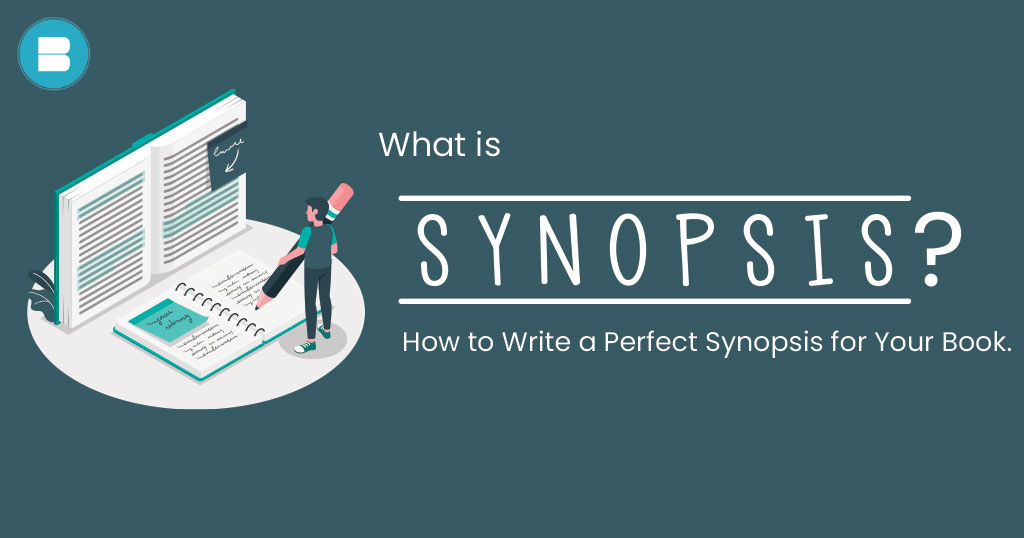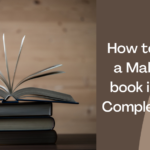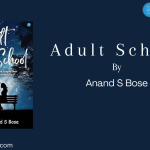In the realm of book pitching, the synopsis stands tall as an indispensable instrument. It holds the key to captivating literary agents and publishers with its artful construction. Are you ready to embark on a journey to unravel the essence of a synopsis and unlock its potential? Join us as we delve into the very fabric of this vital tool, offering you inspiring examples and revealing the essential elements required to forge the perfect synopsis for your literary masterpiece.
Read: What is Em Dash? When to use an Em Dash in a Sentence.
What is a Synopsis?
A synopsis functions as a brief overview of your book, encompassing its central plot, characters, and significant story developments. Its purpose is to captivate literary agents, publishers, and readers alike by offering a glimpse into the narrative and emphasizing the distinctive elements that set your book apart.
To illustrate this further, let’s examine a couple of examples:
- Example 1: Fiction Book Synopsis
Title: “The Lost Kingdom“
Synopsis: “The Lost Kingdom” is set in a world overshadowed by darkness, where our young protagonist, Jane, embarks on a dangerous quest to reclaim the lost kingdom of Eloria. Throughout her journey, she is guided by a mysterious mentor and supported by a loyal group of friends. However, Jane must confront personal challenges and face ancient forces of evil in order to restore hope and light to her people.
In this fictional synopsis, the focus is on the protagonist’s journey and the overarching goal of reclaiming a lost kingdom. It hints at the presence of both internal and external conflicts, creating intrigue and setting the stage for an epic adventure. Example 2: Non-Fiction Book Synopsis
Title: “The Power of Positive Habits”
Synopsis: “The Power of Positive Habits” delves into the science behind habit formation and offers practical strategies for transforming one’s life. The author presents a compelling blend of engaging anecdotes and evidence-based research, providing readers with a step-by-step guide to creating positive habits. These habits, the book argues, can lead to personal growth, improved productivity, and lasting happiness.
In this non-fictional synopsis, the book’s focus is on exploring the science of habits and offering actionable advice. The emphasis is on providing readers with valuable insights and a clear roadmap to achieve personal transformation and well-being.
You may also like: What is Historical Fiction? Definition, Characteristics and Impact
Why is a Synopsis important?
A synopsis is a vital tool for authors, serving several key purposes in the publishing process. Firstly, it plays a crucial role in engaging agents and publishers. When submitting a book for consideration, a well-crafted synopsis provides a concise overview of the story, allowing industry professionals to quickly evaluate its potential and determine if it aligns with their interests. A strong synopsis can make a lasting impression, increasing the likelihood of further consideration and representation.
Additionally, a synopsis is instrumental in attracting readers. As a promotional tool, it offers a tantalizing glimpse into the narrative, characters, and major plot points. By providing a snapshot of the story, it helps potential readers decide if the book aligns with their interests and encourages them to explore the full story. A compelling synopsis generates curiosity, excitement, and anticipation, ultimately driving readers to pick up the book.
One of the primary benefits of a synopsis is its ability to highlight the unique elements of a book. It provides a platform to emphasize what sets the story apart from others in its genre, whether it’s through unique settings, fresh perspectives, innovative storytelling techniques, or captivating characters. By showcasing these distinguishing factors, a synopsis makes the book stand out in a competitive market, capturing the attention of agents, publishers, and readers seeking something distinct and compelling.
Read: What is setting in creative writing? Take a look at elements of story writing.
In addition to its promotional value, a synopsis serves as a valuable tool for authors themselves. Summarizing the entire story into a concise format requires a thorough understanding of the main plot, key events, and conflicts. This exercise helps authors streamline their narratives, identify areas that need further development or clarification, and ensure overall coherence. By condensing the story, authors gain valuable insights into its structure and can refine its core elements.
Elements of a Synopsis:
HOOK
The hook is an essential element of any written work, including a synopsis. It serves as a captivating opening that immediately grabs the reader’s attention and sets the tone for the story. The purpose of a hook is to create intrigue and curiosity, compelling the reader to continue reading.
In the context of a synopsis, the hook should be a concise and powerful statement that encapsulates the essence of the book. It can be a thought-provoking question, an intriguing scenario, a compelling description, or an engaging introduction to the main character or plot.
A strong hook not only entices literary agents, publishers, and readers, but it also conveys the unique appeal and potential of your book. It sets the stage for what’s to come, creating anticipation and generating interest in exploring the full narrative.
When crafting a hook for your synopsis, consider the following:
- Be concise: Keep your hook brief and impactful, usually limited to a sentence or two.
- Grab attention: Use powerful language, vivid imagery, or a compelling concept to immediately capture the reader’s interest.
- Reflect the tone: Ensure that the hook aligns with the overall tone and genre of your book. It should give readers a sense of what to expect in terms of mood and atmosphere.
- Highlight uniqueness: Emphasize what makes your book stand out from others in its genre. Focus on the key elements that make your story compelling, whether it’s an unusual premise, a fascinating protagonist, or a captivating setting.
You may also like: 10 Magical Books That Combine Christmas and Fantasy
Remember, the hook is the first impression readers will have of your book, so make it count. Craft a compelling opening that intrigues and entices, leaving readers eager to delve further into the story you have to tell.
Main Characters
When introducing the main characters in your synopsis, it is important to provide a concise overview of their roles and significance within the narrative. This allows agents, publishers, and readers to get a sense of the characters’ importance and how they contribute to the story’s development.
Here are some tips to effectively introduce the main characters in your synopsis:
- Focus on key characters: Highlight the main characters who have a substantial impact on the plot and its progression. These are typically the central protagonists and significant supporting characters.
- Mention their names: Clearly state the names of the main characters to make them easily identifiable. You can include their full names or use their first names if it suits the tone and style of your book.
- Provide key traits: Briefly describe the essential characteristics or qualities that define each character. This can include physical attributes, personality traits, or any unique qualities that set them apart.
- Highlight their roles: Describe the roles and functions of each character within the narrative. Explain how they contribute to the story’s conflict, development, or resolution. This could involve their relationships with other characters, their goals, or their involvement in specific events.
- Show their motivations: Briefly touch upon the motivations or driving forces behind each character’s actions. This helps readers understand what propels them forward and adds depth to their personalities.
Remember to keep the character introductions concise within the limited space of a synopsis. Focus on the most essential information that characterizes each individual and their relevance to the overall story. By providing a clear and succinct overview of the main characters, you enable readers to gain a sense of their importance and how they contribute to the narrative’s progression.
You may also read: How to Publish a Boook? | Publish Your Book | BlueRoseOne
Plot Summary
In the plot summary of your synopsis, you aim to provide a concise overview of the main plot while highlighting the major events and conflicts that drive the story forward. This summary should give readers a clear understanding of the narrative’s central arc and the key challenges or obstacles that the characters face.
You may also like: 7-Point of Story Structure: Definition, Examples and More
Here are some tips for crafting an effective plot summary in your synopsis:
- Identify the central conflict: Introduce the primary conflict or problem that drives the story. This can be a personal struggle, a societal issue, or any other significant challenge that the characters must confront.
- Highlight major events: Summarize the key events that occur throughout the narrative. Focus on the most impactful and pivotal moments that shape the story’s progression.
- Show cause and effect: Demonstrate how the events are interconnected and how each one leads to the next. This helps convey the sense of a coherent and engaging storyline.
- Mention turning points: Highlight any major turning points or plot twists that significantly impact the direction of the story. These moments often introduce new conflicts or change the dynamics between characters.
- Convey the stakes: Clearly communicate the consequences or stakes involved in the central conflict. This helps readers understand why the events are significant and what is at risk for the characters.
- Maintain brevity: Remember to keep the plot summary concise, focusing on the most important elements. Avoid getting caught up in unnecessary details or subplots.
The goal of the plot summary is to give readers a clear sense of the narrative’s main trajectory, while also piquing their interest and curiosity. By presenting the central conflict, major events, and significant turning points, you provide a compelling overview that entices readers to explore the full story within your book.
Unique Selling Points & Cliffhanger
When highlighting the unique selling points of your book in the synopsis, you want to emphasize what sets it apart from others in its genre. This can include elements such as unique settings, fresh perspectives, innovative storytelling techniques, or any other standout qualities that make your book distinct and appealing.
Here’s how you can effectively convey your book’s unique selling points in the synopsis:
- Identify distinctive elements: Identify the aspects of your book that differentiate it from others in the same genre. These can be unique settings, unconventional characters, original story concepts, or innovative narrative structures.
- Emphasize fresh perspectives: If your book offers a fresh perspective on a familiar theme or tackles a unique subject matter, make sure to highlight it. Explain how your approach brings a new and exciting angle to the genre.
- Showcase unique settings: If your book is set in a captivating or unconventional location, mention it in the synopsis. Unique settings can add depth and intrigue to the story, creating a distinctive reading experience.
- Highlight innovative storytelling techniques: If your book employs innovative storytelling techniques, such as non-linear narratives, multiple perspectives, or experimental structures, mention these techniques and their impact on the reader’s experience.
- Demonstrate genre-bending elements: If your book combines elements from different genres or blends genres in an interesting way, highlight these genre-bending aspects. This can attract readers looking for a fresh and unique reading experience.
Additionally, ending the synopsis with a cliffhanger or an intriguing question can create a sense of suspense and leave readers eager to discover more. This can be a pivotal moment in the plot, a surprising twist, or a question that hints at unresolved mysteries or conflicts. By ending the synopsis on a tantalizing note, you create a strong desire for readers to dive into the book and uncover the answers to their burning questions.
Read: Here’s a list of 7 Best Young Adult Books to Read on Kindle Unlimited.
Remember, the goal is to make your book stand out and generate curiosity among literary agents, publishers, and readers. By showcasing its unique selling points and leaving readers wanting more, you increase the chances of capturing their attention and enticing them to explore the full narrative within your book.
What not to do while writing a synopsis?
When writing a synopsis, it’s important to avoid common pitfalls that can undermine its effectiveness. Here are some key things to avoid:
- Don’t include every detail: A synopsis is meant to be a concise summary, so avoid including every subplot, minor character, or insignificant event. Focus on the main plot, major conflicts, and essential characters to maintain clarity and brevity.
- Don’t reveal all the twists and surprises: While you want to provide an overview of the plot, avoid spoiling the entire story by revealing all the twists and surprises. Leave room for readers to experience the excitement and suspense firsthand.
- Don’t use vague or generic language: Be specific and precise in your language. Avoid using generic terms or vague descriptions that fail to convey the unique aspects of your story. Provide concrete details that help readers understand the key elements that make your book stand out.
- Don’t introduce unnecessary subplots or characters: Stick to the core narrative and primary characters in your synopsis. Avoid introducing numerous subplots or minor characters that complicate the summary and distract from the main story.
- Don’t neglect the emotional core: A synopsis should convey not only the events of the story but also the emotional journey of the characters. Don’t focus solely on plot points; also highlight the emotional stakes, character growth, and the core themes of your book.
- Don’t rush the ending: The conclusion of your synopsis is just as important as the hook. Avoid abruptly ending the summary without a satisfying resolution or leaving readers confused. Craft an ending that leaves readers with a sense of intrigue or a compelling question, enticing them to read more.
- Don’t overlook proofreading and editing: Treat your synopsis with the same level of care as your manuscript. Avoid grammar and spelling errors, and ensure the synopsis is polished, professional, and error-free.
By avoiding these common pitfalls, you can craft a strong and effective synopsis that captures the essence of your book, engages readers, and increases your chances of attracting literary agents, publishers, and ultimately, enthusiastic readers.
Read: Writer’s Block – What? Why? and How to overcome it.
You may also read: Tone Examples in Literature: 15 Must-Know Types With Examples
Conclusion:
Crafting a compelling synopsis is crucial for grabbing the attention of literary agents and publishers. By defining the synopsis, providing examples, and outlining the key elements, we hope this blog post has equipped you with the tools to write a perfect synopsis for your book. Remember, a well-crafted synopsis can be the gateway to capturing the interest of those who can help bring your book to a wider audience.















